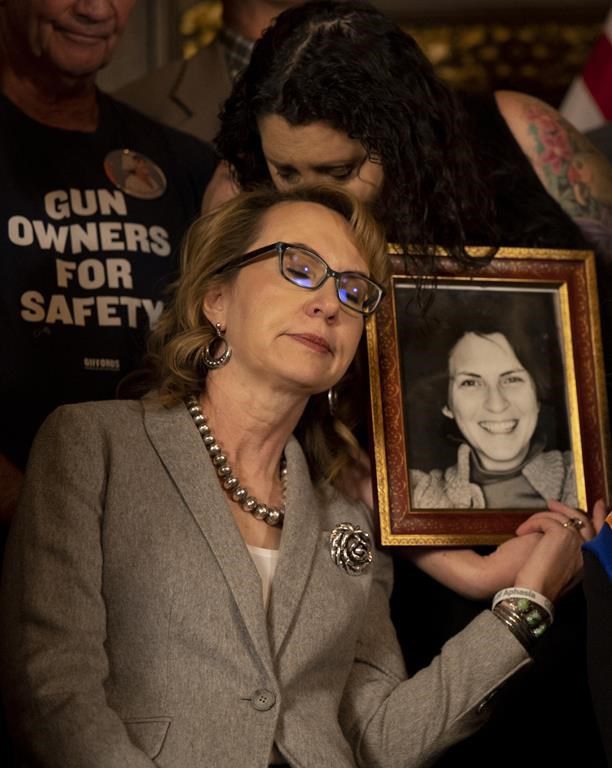ST. PAUL, Minn. (AP) — Minnesota Democratic Gov. Tim Walz signed two gun safety measures into law Friday afternoon, aligning his battleground state with others nationally that have taken steps to keep guns out of the hands of people in crisis and criminals.
Gabby Giffords — a former Democratic congresswoman who became a gun safety campaigner after she was shot in the head in 2011 in Tucson, Arizona — gave a short speech to the cheering crowd at the ceremony. Because of the severe brain injury she suffered, she had to re-learn how to walk and talk.
“Stopping gun violence takes courage,” Giffords said. “Now is the time to come together. Be responsible. Democrat, Republican, independent — we must never stop fight!”
Moments later, Walz signed a broad public safety bill that included the two gun measures: a “red flag law” and expanded background checks for gun transfers. The red flag law allows authorities to ask courts for “extreme risk protection orders” to temporarily take guns away from people deemed to be an imminent threat to others or themselves.
The governor looked at the children, adults and cameras that filled the ornate room in the State Capitol and said: “There’s a reason the room is so full — because the vast majority of Minnesotans have been waiting too damn long for this day!”
People wearing t-shirts that said “Gun Owners for Safety” and “Moms Demand Action” clapped and cheered. Walz continued, saying the measures “are two very simple, common sense issues” that have not been properly debated by the state’s lawmakers for decades.
The former Minnesota Senate GOP majority prevented much discussion of similar proposals in their body over the last several years. But Democrats gained a one-seat Senate majority in the November elections to win the trifecta — control of both chambers and the governor’s office — for the first time in eight years.
The gun safety measures by themselves would have been a tough vote for several rural Democrats in the Senate. But putting the measures in the final broader public safety bill may have given them enough political cover to vote yes last week.
Supporters said the policies are the beginning — not the end — of an effort to protect people across the state and prevent mass shootings at schools, grocery stores, movie theaters and everywhere else. Opponents say the measures infringe on the Second Amendment right to bear arms, and that the policies will be ineffective at lowering crime or suicide rates.
Rob Doar, a lobbyist with the Minnesota Gun Owners Caucus, said in an interview that the policies are more likely to criminalize “common conduct among peaceful gun owners” — like loaning firearms between friends or hunting partners — than they are to curb the illicit gun market.
“Really, it comes down to how these are applied,” Doar said. “If we see a clear violation of somebody’s due process rights, then we’ll certainly take legal action.”
At least 19 states have red flag laws, but each new mass shooting seems to widen the political divide on who should be allowed to have guns and what types should be permitted. Disputes over gun laws on the books often wind up in court because of constitutional issues.
While red flag laws are touted as a powerful tool to stop gun violence before it happens, an Associated Press analysis in September found that they are barely used in the states where they exist.
___
Trisha Ahmed is a corps member for the Associated Press/Report for America Statehouse News Initiative. Report for America is a nonprofit national service program that places journalists in local newsrooms to report on under-covered issues. Follow Trisha Ahmed on Twitter: @TrishaAhmed15
Trisha Ahmed, The Associated Press








